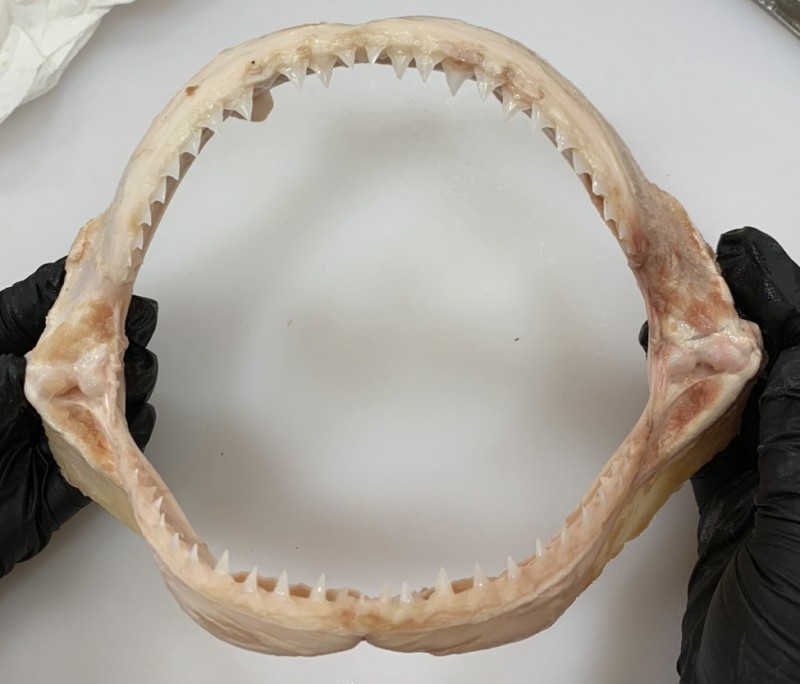The shark products, often carried in personal luggage or by post, were likely intended for personal consumption, resale, or as trophies. While most fin products seized in Australia originated from Asia, preserved shark specimens were more commonly linked to the United States. In Aotearoa/New Zealand, however, Australia was the most common source of both passenger and mail seizures — an unexpected finding given that seizures in Australia had declined over time, while New Zealand’s numbers rose.
The post You Won’t Believe Which Country Is Fueling Shark Product Trade in the Pacific appeared first on Green Prophet.
A bull shark jaw by Josephine Lingard
When we think of the illegal wildlife trade, especially involving threatened marine species like sharks, most of us picture Southeast Asian markets in China where they eat shark fin soup, or global shipping ports. But new research suggests a surprising player in the trans-Pacific shark trade: Australia.
A study led by Josephine Lingard, a PhD candidate at the University of Adelaide’s School of Biological Sciences and Wildlife Crime Research Hub, reveals that both Australia and Aotearoa/New Zealand are not only destinations for shark products but also active nodes in the movement of shark-derived goods between regions. The research, published in Pacific Conservation Biology, used border seizure data from both countries to track the flow of shark fins, trophies, and meat — and Australia emerged as a significant point of origin.
Shark feeding time, Australia
“We did not expect Australia to be a dominant country of origin for seizures in Aotearoa/New Zealand,” said Lingard. “But the data showed otherwise.”
Related: Arab action on shark finning
The shark products, often carried in personal luggage or by post, were likely intended for personal consumption, resale, or as trophies. While most fin products seized in Australia originated from Asia, preserved shark specimens were more commonly linked to the United States. In Aotearoa/New Zealand, however, Australia was the most common source of both passenger and mail seizures — an unexpected finding given that seizures in Australia had declined over time, while New Zealand’s numbers rose.
Several possible explanations emerge: New Zealand’s geographic proximity and flight connectivity to Australia may make it a natural transit route. Alternatively, shark products may be processed or purchased in Australia before being brought into New Zealand. It’s also possible that Australia is listed as the origin simply due to flight routing, not actual source of capture or processing.
The environmental stakes are high. Over one-third of all chondrichthyan species — a group that includes sharks and shark-like rays — are currently threatened with extinction. All of the threatened shark species are also considered overfished, adding further pressure to already strained ocean ecosystems. Many of these species are targeted for their fins, used in shark fin soup, a status-laden delicacy particularly popular in parts of Asia.
And while the global market for shark meat has steadily grown since the early 2000s, the legal trade in shark fins — when fins are landed attached to the body — has been declining. This suggests that illegal or unregulated trade may be filling the gap, often without proper species identification or monitoring.
Recommended Story For You :

green-products
Bringing Dead Batteries Back To Life Is Simple!

green-products
SEPTIFIX to the Rescue! Say Goodbye to Problems and Hello to Savings

green-products
Ecomposing of Paper Towels Produce Methane Gas

green-products
A Leading Cause Of Global Warming!

green-products
A cleaner world where energy is abundant essentially free

green-products
and sourced directly out of the inherent power of the space surrounding us.

green-products
MIT Discovery can cut power bills by 65%

green-products
Easy DIY Power Plan Will Change Our World Forever

green-products
Discover the World with Our Passionate Geography Teacher in Memphis!

green-products


